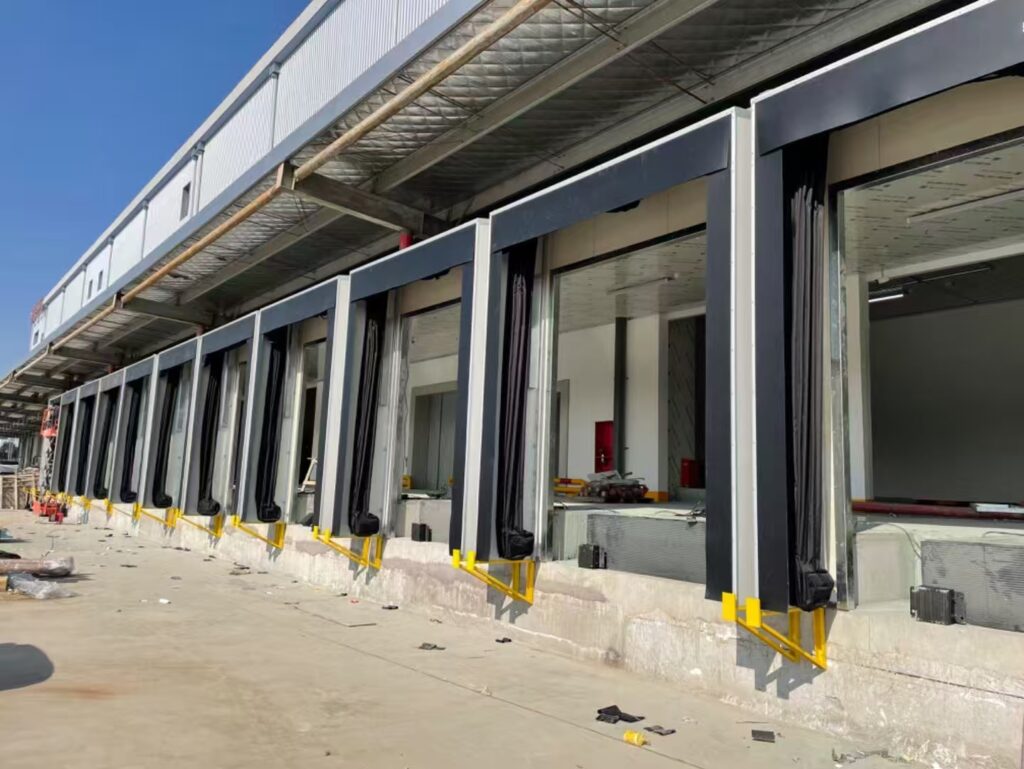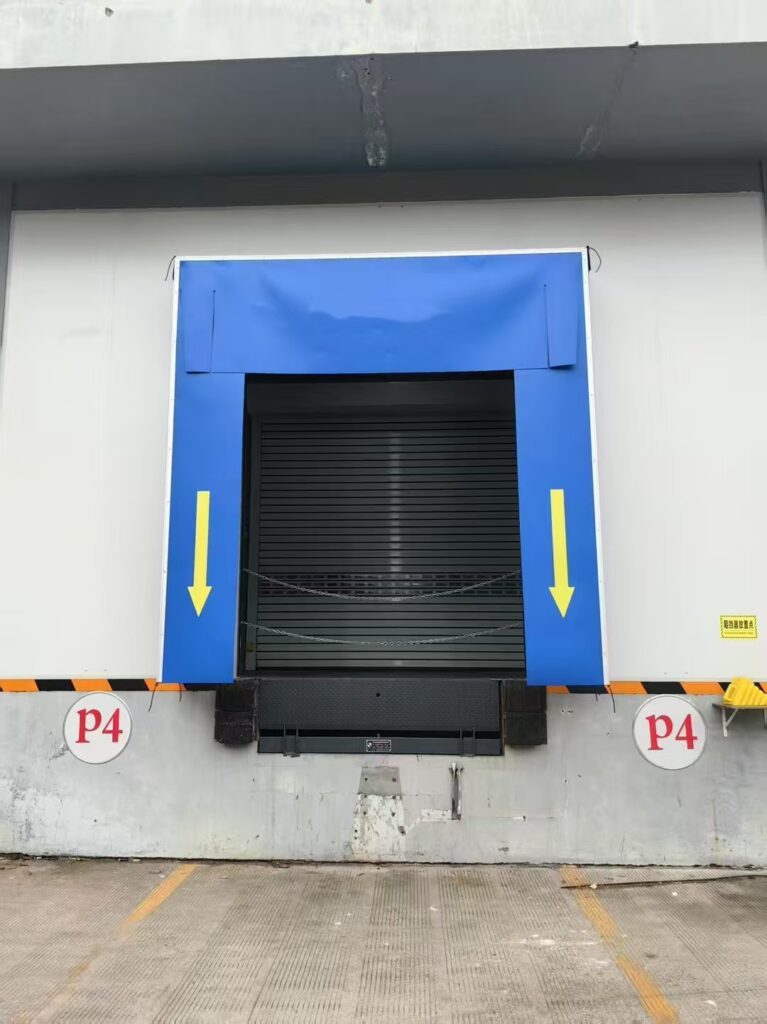1. Dock Shelters: The First Line of Thermal Defense
Dock shelters (or dock seals) are stationary barriers installed around warehouse doors to create a sealed connection with truck trailers. Their value in cold chain applications centers on:
-
Temperature Preservation: Made from insulated vinyl or foam-filled fabrics, they significantly reduce thermal transfer. This can cut refrigeration energy consumption by 18-25% (International Cold Chain Association, 2024).
-
Contamination Prevention: Brush-style seals effectively block dust, insects, and humidity from entering chilled environments. This is critical for pharmaceuticals and high-value perishables like vaccines.
-
Durability Features: They incorporate UV-resistant materials for facilities with frequent door cycles (e.g., 100+ daily operations). Fire-retardant options are also available, compliant with NFPA 101 safety standards.
Case Study: A UK frozen food warehouse retrofitted 14 doors with heated dock shelters, achieving annual energy savings of £32,000.

2. Dock Levelers: Bridging the Efficiency Gap
Hydraulic or mechanical dock levelers compensate for height differences between docks and trailers, enhancing operations by:
-
Boosting Loading Productivity: Their 12°-14° ramp angles accommodate diverse truck heights without manual adjustments. This also enables simultaneous forklift operations at multi-level docks.
-
Cold Chain-Specific Designs: Stainless steel models resist corrosion from defrosting condensate. Pit-style installations help prevent ice accumulation in sub-zero environments.
-
Improving Safety: Features like anti-slip diamond plating and automatic lip deployment have been shown to reduce worker injuries by 40% (OSHA data).
Example: A Canadian seafood processor achieved 98% trailer load utilization using AI-assisted levelers that predict optimal dock height.

3. Inflatable Shelters: Dynamic Climate Control
Inflatable shelters extend from docks into trailer interiors, creating temporary climate-controlled tunnels. Key advantages are:
-
Operational Flexibility: Adjustable lengths (2–4m) accommodate varying trailer depths. They deploy within 90 seconds, ideal for time-sensitive cold chain operations.
-
Regulatory Compliance: Meet USDA F
Case Studies for Cold Storage Dock Equipment Applications:

I. Fresh Food Cold Chain Cases
-
Guangdong Fruit & Vegetable Wholesale Market Upgrade: Installing aerogel-insulated inflatable dock shelters led to monthly electricity savings of 4,200 kWh per loading bay, translating to annual cost reductions exceeding ¥360,000. Strawberry spoilage rates dropped from 6.8% to 2.1%, recovering ¥750,000 in annual losses. An intelligent linkage system uses RFID to identify truck information and automatically adjust sealing parameters, boosting loading efficiency by 20% and reducing monthly defrosting cycles by 4.
-
Nordic Seafood Distribution Center: Deploying self-repairing material shelters (withstanding -40°C) combined with AI-powered air pressure regulation cut energy consumption by 22%. Frost accumulation at loading zones decreased by 80%, with temperature fluctuations stabilized at ±0.5°C. A dual-airbag structural design provides redundancy: if the outer layer ruptures, the backup maintains effective sealing for 4 hours.
